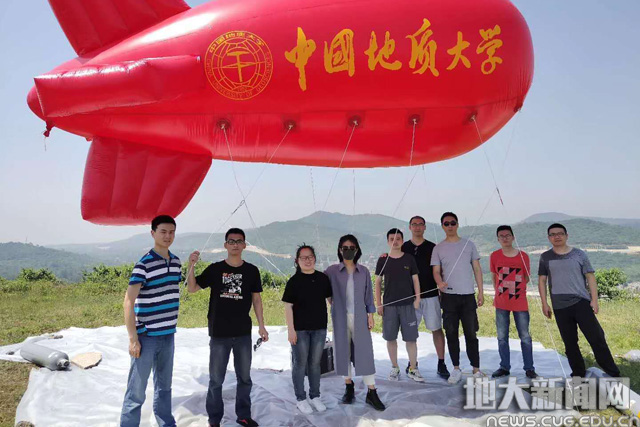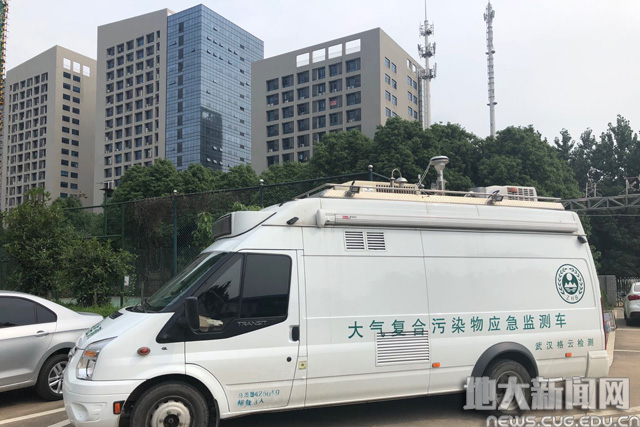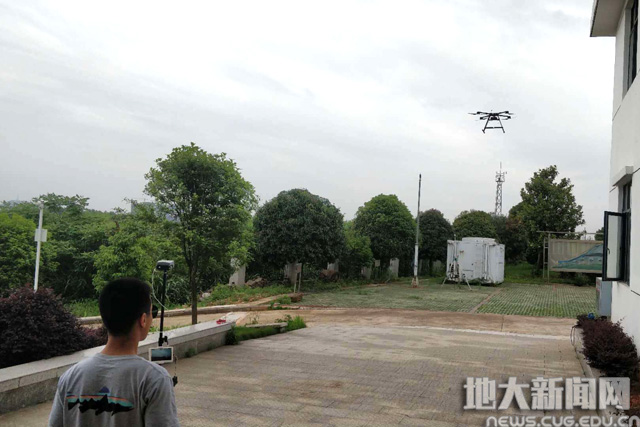From May 20 to June 18 in 13 cities, a joint research team explored the formation mechanism and interaction of ozone (O3) and other air pollutants. The team consisted of the members from CUG, including Prof. KONG Shaofei and his team “Source Emissions and Regional Atmospheric Environment” from Department of Atmospheric Sciences, School of Environment Studies and researchers from Institute of Heavy Rain, China Meteorological Administration (CMA), Nanjing University of Information Science and Technology (NUIST), Jiangsu Institute of Meteorological Sciences and Wuhan Tianhong Environmental Protection Industry Co. Ltd. Various air pollutants were monitored across North China and Central China through fixed-point and cruising observation to obtain their spatial-temporal variation and vertical distribution.

Ozone, a pale blue gas with a distinctively pungent smell and high oxidizability, has detrimental effects on human health and crop yields. Central and Eastern China cities suffer from excess ozone frequently in summer, thus ozone is the focus of regional air pollution control. Ozone of the ground layer is mainly produced by photochemical processes involving nitrogen oxides (NOx), non-methane volatile organic compounds (NMVOCs), and carbon monoxide (CO). Due to the complex photochemical reactions, the prevention of ozone pollution has been difficult.
For the field observation, the team used tethered balloons to detect the concentration profiles of O3, sulfur dioxide (SO2), NOx, CO, fine particles (PM2.5),black carbon (BC) and aerosols of different sizes within the atmospheric boundary layer of about 1500 meters. The vertical profiles of meteorological parameters including wind speed, wind direction, ambient temperature, relative humidity, and atmospheric pressure were also detected synchronously.

The team employed a special vehicle which was equipped with laser radar and online monitoring instruments for O3, CO, SO2, NOx, PM2.5, PM10, BC, heavy metals and VOCs. The vehicle carried out fixed-point and cruising observation of air pollutants along one route (Wuhan, E’zhou, Huangshi, Xianning, Chibi, Yueyang, Jingzhou, Jingmen, Xiangyang, Suizhou, and Wuhan) and another (Wuhan, Kaifeng, Beijing, Xinxiang, and Wuhan).

At the key moment of the fight for blue skies in summer, the team, with the help of state-of-the-art equipment, aimed to study, from the view of a larger spatial-temporal scale, the spatial-temporal variation of ozone and its precursor gases, ozone formation mechanisms and regional transportation interaction, and atmospheric particles spatial-temporal variation and its relationship with ozone, which are the weak areas of current research. The observation can fill the information gaps of long-distance cruising monitoring of atmospheric pollutants and chemical components, and the results can provide powerful support for coordinated inter-regional prevention of ozone pollution in Central and Eastern China in summer.